Anesthesia Machine
Introduction
- The anaesthetic (anaesthesia) machine is used during surgical procedures to support the administration of anaesthesia.
- An anesthesiologist (anaesthetist) is a physician trained in anesthesia and perioperative medicine.
- The continuous-flow anaesthetic machine is the most common type.
- An accurate and continuous supply of medical gases (such as oxygen and nitrous oxide), mixed with an accurate concentration of anaesthetic vapour (such as halothane or isoflurane), and deliver this to the patient at a safe pressure and flow.
- Modern anaesthesia machines contain suction unit, patient monitoring device and even infusion pumps that incorporate a ventilator.
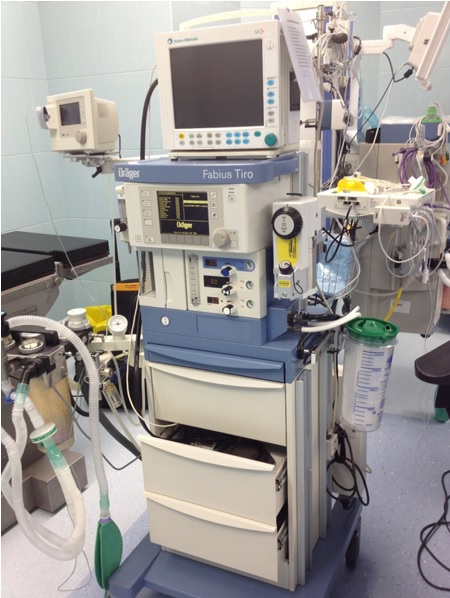
How it works?
- 3 main sources are needed to be connected to the machine:
- Oxygen (O2),
- Nitrous Oxide (N2O)
- Air (sometimes)
- A controlled mixture of these gases along with anaesthetic vapour passes through a vaporizer and is delivered to the patient.
- Sometimes, a ventilator is also incorporate with the machine for rebreathing. (making it a closed circuit)
- For absorbtion of the exhaled CO2 and adding fresh gases to the circuit for reuse, soda lime canisters are used.
- For monitoring the gas pressure several pressure gauges are designed on the machine.
- Generally, 25% (or 21%) oxygen is always kept in the circuit (delivered to patient) as a safety feature.
- Machines are set to give various alarms to alert operators.
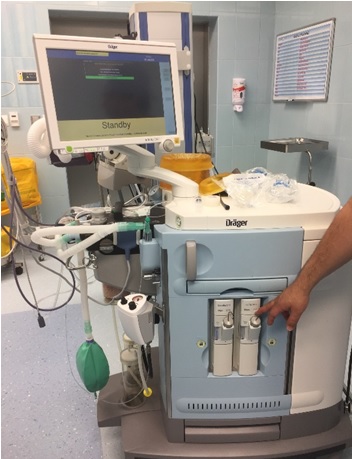
System Component
- Gas source- compressed oxygen
- Pressure regulator (pressure reducing valves)
- Flowmeter
- Vaporizer
- Patient breathing circuit
- Waste Gas Scavenger systems
- Monitor
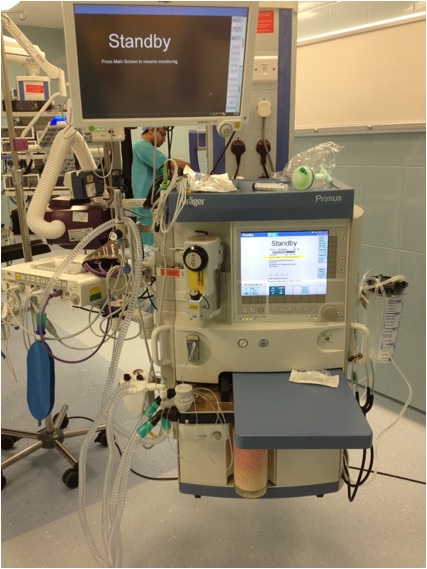
Gas source- compressed oxygen
- Provides for the oxygen requirements of the patient and acts as a carrier gas for the inhalation anesthetic agent.
- It could be that the oxygen is stored as:
- Metal Cylinders (Compressed gas held under pressure)
- Central Oxygen Outlet
Pressure regulator
- As oxygen moves from the high-pressure tank (at up to 2200 psi) into the anesthetic machine.
- The pressure is lowered by a regulator to provide a safe operating pressure (45-50 psi).
- Regulator also provides for constant flow as the pressure in the tank decreases.
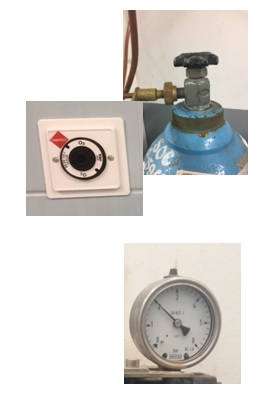
Flowmeter
- Oxygen travels through a low-pressure hose to the flowmeter. (measured amount of oxygen to the patient)
- Flow rates are expressed in liters of gas per minute (L/min).
- Oxygen enters the flowmeter and is delivered to the vaporizer at a constant rate as indicated on the flowmeter dial.
Vaporizer
- Oxygen exits the top of the flowmeter and continues via a low-pressure hose to the vaporizer.
- The vaporizer is designed to convert liquid anesthetic to vapor and to add a controlled amount of vapor to the carrier gas flowing through the machine.
- The precision vaporizer allows delivery of a precise amount of anesthetic vapor to the breathing circuit. (If the oxygen flow is turned off, no anesthetic is delivered to the patient)
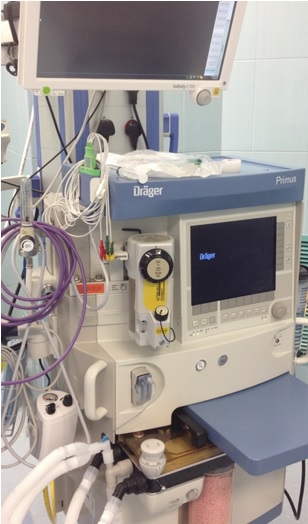
Patient breathing circuit
- Delivers oxygen and anesthetic and removes carbon dioxide produced by patient.
- Two basic types of breathing circuits are used:
- Rebreathing or circle system-used for patients over 10 lbs body weight.
- Non-rebreathing system- used for patients under 10 lbs.
Waste Gas Scavenger systems
- Eliminate excess anesthetic gases to minimize breathing by personnel.
- In the field we use a passive scavenging system, which consists of an activated charcoal canister attached to the scavenging or exhalation hose.
- As part of a circle (rebreathing) circuit, the canister is attached to a scavenging hose that is usually part of the pop-off valve.
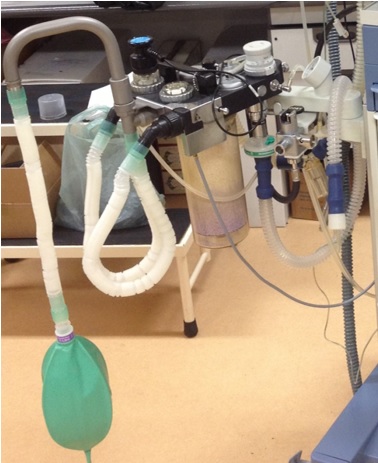
Standard anesthesia monitors
Because of the rapid changes in patient status during anesthesia, the patient should be continuously monitor and provide anesthesia care.
- Oxygen Analyzer(Fio2)
- Pulse Oximeter(Spo2)
- Capnography(Co2)
- Blood Pressure
- Electrocardiogram( ECG)
- Ventilation (V)
- Temperature(T)
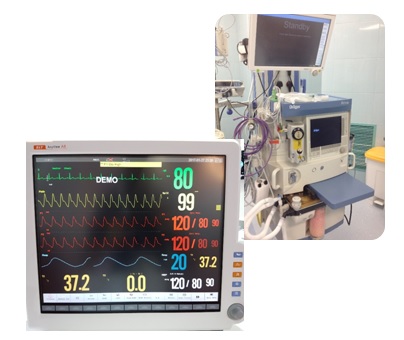
Anesthesia
- Modern surgery is possible because of the development of safe and effective anesthesia. Without the ability to eliminate pain, most surgical procedures could not be performed.
Types of anesthesia
- Local Anesthesia
- Blocks the nerves in a small, specific area of the body. It is used to numb specific part without affecting any other part of the body. Usually in minor surgeries. It is usually administered by injection.
- Regional Anesthesia
- Regional anesthesia numbs a large area, or region, of the body and is used for more extensive and invasive surgery. For example, if regional anesthesia is used for prostate surgery, the patient is numb from his navel to his toes.
- General Anesthesia
- General Anesthesia renders the patient completely unconscious and with no memory of the surgical procedure upon awakening.